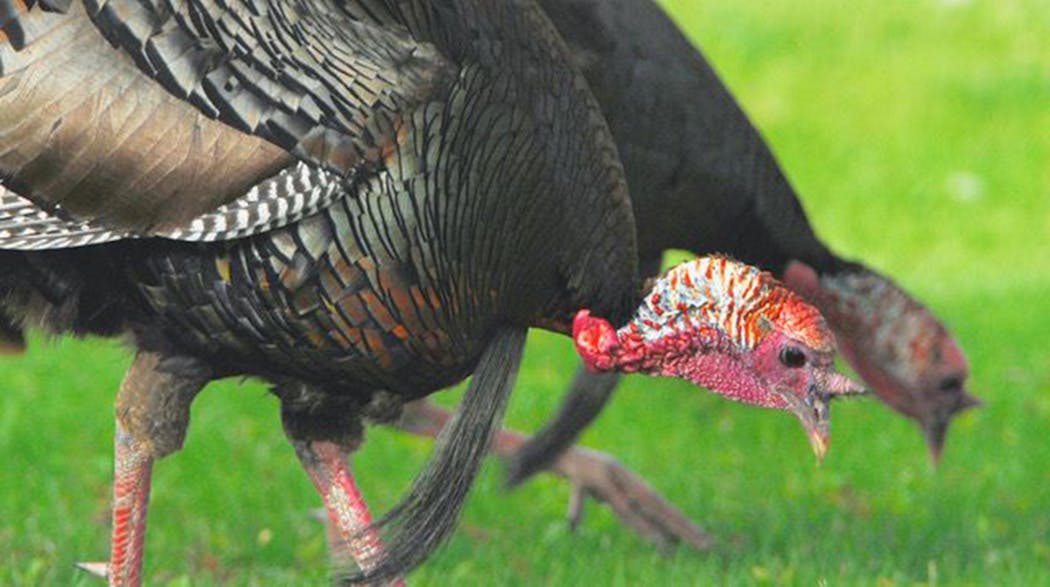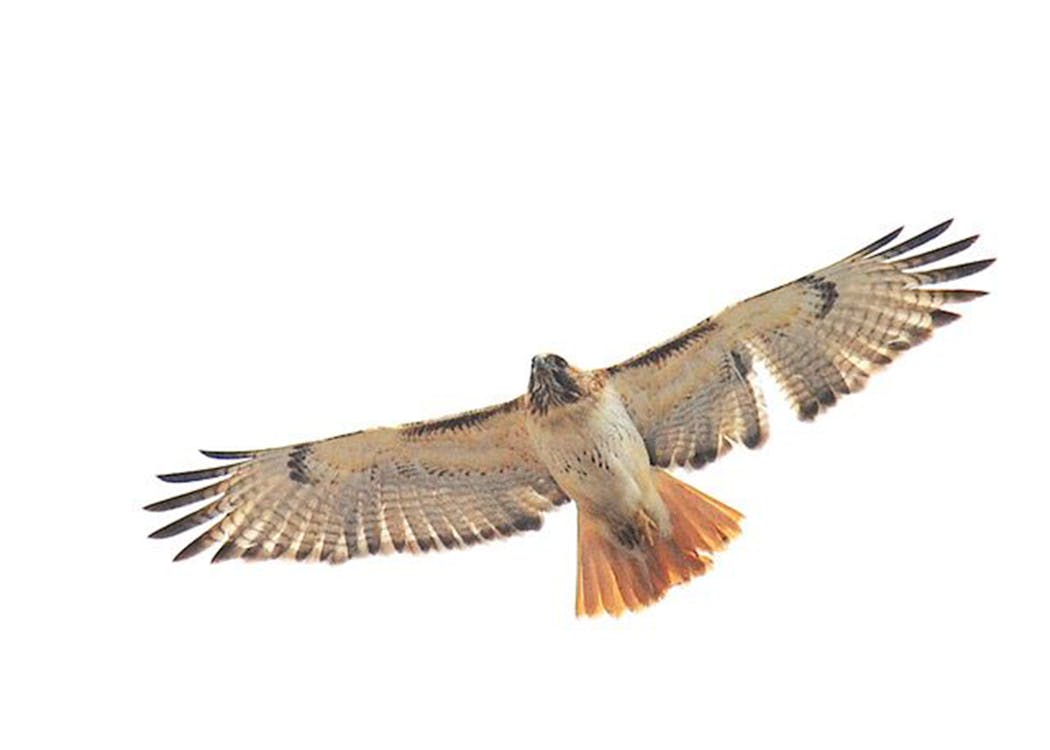Q: I've watched many, many mallards lifting off ponds and lakes but can't figure out how they do it. Can you explain?
A: Most water birds need to run across the water's surface in order to reach takeoff speed (think of loons), but mallards and some other dabbling ducks can launch from water directly into the air. You've probably seen a group of mallards suddenly take flight when spooked, their wings making a loud sound as they become airborne. They're able to do this because their first wingbeat pushes against the water's surface, launching them into the air, then they flap vigorously to climb and reach flying speed.
Orioles and suet?
Q: I didn't know that orioles would eat suet, but a female oriole visited my suet feeder in early June. Have you heard of this?
A: When wild creatures have to endure long, cold periods like we had this spring, they become creative about finding enough calories to survive. Your female oriole was smart to try your suet, then keep coming back for more. This food approximates the insect protein she would be consuming in a warmer spring. I noticed orioles and yellow-rumped warblers gulping down my suet this spring, as well as catbirds and robins. Even cardinals, with their too-big beaks, tried to get into the act at the suet cage.
Populations plummeting?
Q: It appears to me that the bird population is down this year. We're not seeing the usual number of birds at our birdbath and it seems eerily quiet out there.
A: I think many of us have heard so much about all the negative things happening to the natural world, most of them caused by mankind, that we have legitimate fears about the survival of birds and other living things. I heard from several Star Tribune readers this spring who were lamenting the lack of birds in their backyards. But I heard also from even more who were reporting an abundance of birds everywhere they looked.
The big radar-based services that track migration, especially Bird Cast, reported huge, almost unprecedented flights of migratory birds this spring. These occurred later in the season than usual, but once they started moving, there were nights with hundreds of millions of birds flying across the country after dark. I found these reports very reassuring and hope you can rest easy, with the knowledge that nothing dire has happened to reduce bird populations so suddenly. We all need to do all we can, however, to reduce the steady and alarming negative population trends affecting birds and other creatures.
So many turkeys
Q: Whenever I drive on the river road near the University of Minnesota, I see turkeys strutting around, and this year there seem to be more than ever before. Is this unusual?
A: There have been wild turkeys along that section of East River Road for quite a few years, and they're becoming increasingly common across the metro area, as well. Before 1970, when the Department of Natural Resources began reintroducing wild turkeys to the state, turkeys were a rare sight. But as the population increased, these large birds found that cities and suburbs fulfilled their needs for food and shelter, and predators were few. However, with coyotes now moving into cities and suburbs, there may be some impact on the urban turkey population.
Eat like a bird
Q: How much food do birds eat in a day?
A: Good question, and it turns out that birds, with their high internal body temperatures and rapid metabolisms, need to eat comparatively more than mammals do. And smaller birds need more calories, relative to their body weight, than larger birds do. A small black-capped chickadee, weighing less than half an ounce, spends much of its day capturing insects and spiders and pecking open seeds to fulfill a food budget of about 35% of its body weight. A Cooper's hawk, a species that weighs just over a pound, eats about 12% of its body weight each day. And the tiny ruby-throated hummingbird, weighing 1/10th of an ounce, consumes 100% of its weight in nectar and insects each day.
Helicoptering hawks
Q: I like to watch red-tailed hawks hunting; their flight is so elegant. Sometimes they look like they're just stopping and floating in the air. Is this normal?
A: You're very observant, and yes, these handsome hawks are versatile aerial hunters. They may spend hours on a utility pole, waiting for a small rodent to move about. But they can also spend a great deal of time in the air, hanging stationary in a breeze without flapping their wings. This is called kiting and the floating hawk keeps its eyes on the ground, searching for prey. If a vole or small rabbit passes below, the hawk will fold its wings and drop quickly to catch it.
Not in the books
Q: A bird showed up at our feeders recently, and we can't find it in any of our bird books or online. We hope you can help identify it.
A: It's not surprising that this bird doesn't appear in field guides, because the photo you sent shows a canary, most likely an escaped cage bird. This small finch's ancestors originated on islands off the west coast of Africa, and it won't survive long as winter approaches. How about trying to capture it and either keep it yourself or take it to the Animal Humane Society for placement?
Several years ago, a parakeet appeared at my feeders near the end of summer. After doing some online research, much of which stated that the bird would be nearly impossible to capture, I decided to try. I bought an inexpensive bird cage at a pet store, stocked it with sunflower and safflower seeds and hung it from a shepherd's hook outdoors, with the cage door open. The parakeet seemed interested but would never enter the cage. A friend who had birds recommended adding a spray of millet to the cage, and that was the answer. The bird returned time and again to feed on millet seeds so intently that I was able to sneak up and close the cage door. A friend who kept birds offered to take this one, and he spent several years in her care. I'd encourage you to give this a try and I'd love to hear how things turn out.
St. Paul resident Val Cunningham, who volunteers with the St. Paul Audubon Society and writes about nature for a number of newspapers and magazines, can be reached at valwrites@comcast.net.

The 5 best things our food writers ate this week

A Minnesota field guide to snow shovels: Which one's best?

Summer Camp Guide: Find your best ones here

Lowertown St. Paul losing another restaurant as Dark Horse announces closing




